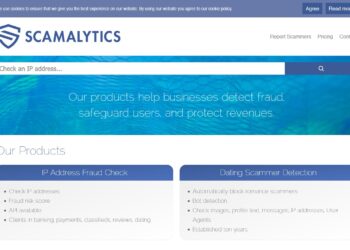The cloud is an integral part of every organization’s infrastructure these days. While the cloud offers several benefits, such as easy scalability and cost-effectiveness, security is often a hurdle when using cloud-based systems.
Cloud security is particularly challenging due to its sprawl. Thanks to several tenants on a single server, each with varied access requirements and processes, the average cloud service provider faces significant security challenges.
From an organization’s perspective, outsourcing security to a cloud service provider entirely is a bad move. Here are four cloud security best practices every modern company must install right now.
Examine access workflows
Modern organizations are driven by machines. For instance, the DevOps pipeline is littered with microservices and cloud containers exchanging data and access to power applications. While this structure offers flexibility and scale, it hampers security.
Most cybersecurity techniques are geared towards securing systems from malicious manual access. However, machines pose a different challenge entirely. They move far too quickly for a manually-driven security team to track access. Malicious actors can leverage expired credentials or security certificates to hobble critical systems.
The best solution is to automate system access. A tool that connects various infrastructure nodes and applies Zero Trust security philosophies will ease the burden the security team faces. These tools can also grant time-based and risk-based access, both critical to ensuring machines do not access critical data more than is strictly necessary.
Companies must examine access protocols around onboarding and offboarding employees. Often, these credentials pose a significant threat when unused, giving malicious actors an easy way in.
Monitor and benchmark user activity
Users, or human beings on the network, tend to be a security weak link. This is not because humans are somehow incapable. It’s because manually predicting user behavior is tough. Malicious insider attacks are one of the biggest cybersecurity threats organizations face.
Securing a network against these attacks is challenging but not impossible. For starters, monitoring network usage and benchmarking the average user’s activity is essential. This way, security teams can quickly identify malicious activity and take steps to mitigate it.
This solution works for both on-prem and cloud infrastructure. The potential for damage is great in the cloud thanks to the sprawl it creates. Creating backups of data and storing them in offsite locations is a great way to ensure business continuity is not hindered when an attack takes place.
Modern organizations face another challenge in the form of third party vendors and service providers. These actors bring their vulnerabilities into company systems and can offer a hacker an easy way in. Encryption at source and enforcing security best practices with vendors is the best way to ensure malware doesn’t creep in.
Monitoring a vendor’s activity on the company network, just like an employee’s activity, is a great way to spot unusual behavior and stop potential attacks in their tracks.
Grant risk-based access
Modern organizations employ sophisticated security systems but fail to back them up with solid processes. For instance, security teams spend significant resources architecting an access monitoring solution only to grant access based on seniority level in the company.
Executives usually receive access IDs that lie unused, a prime hunting ground for malicious actors. Instead of granting access to systems based on seniority or job title, security teams must evaluate access based on risk. Again, Zero Trust works well when granting access.
Companies must also examine the privileges each user is given within the system. Some IDs carry greater privileges and security teams tend to monitor them less since the user is sophisticated. For instance, admin IDs are typically not scrutinized as much as less-privileged ones.
However, admin IDs tend to have the most privileges, and users can inadvertently cause damage. Monitoring the activity of these IDs is necessary.
Educate employees
Cybersecurity training at most companies is stuck in the Stone Age due to the approach these organizations adopt. Typically, training is delivered via lengthy seminars full of technical jargon. Instead, companies must adopt a more engaging approach that ensures employees perform training tasks more frequently.
Instead of delivering technical information, companies must design training programs that simulate real-world incidents that employees will encounter. By delivering these lessons in engaging environments piecemeal, employees will gradually learn lessons at their own pace, giving security teams less to worry about when an incident occurs.
Simulated platforms also give companies access to a wealth of data, giving them insights into which security areas are a concern and where vulnerabilities lie. While cloud security tends to fall into highly technical areas, everyday users can potentially create incidents thanks to improper usage.
Thus, education is critical, and companies must invest in platforms that deliver the right lessons at all times.
Cloud security is paramount
Given the volumes of data companies store in the cloud, securing it is essential. The tips listed in this article will help companies create a robust security workflow that ensures resilience in the long run.






